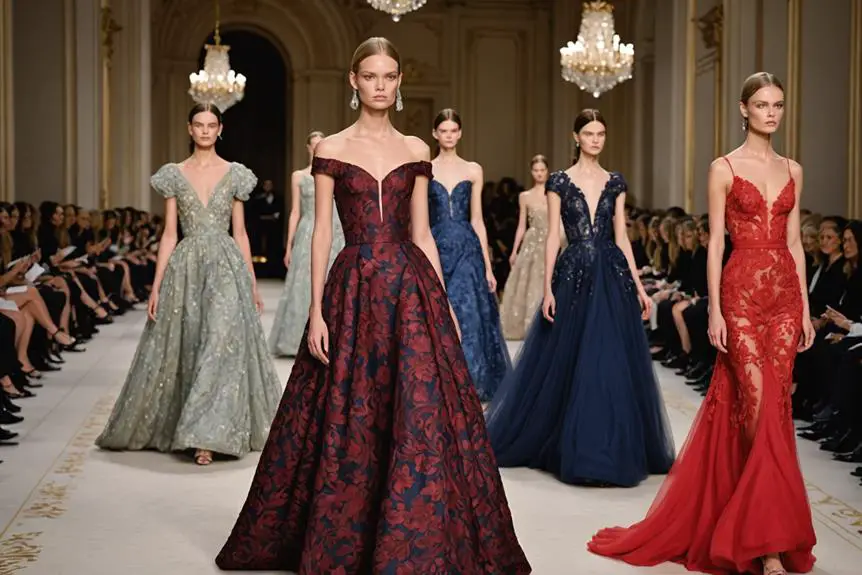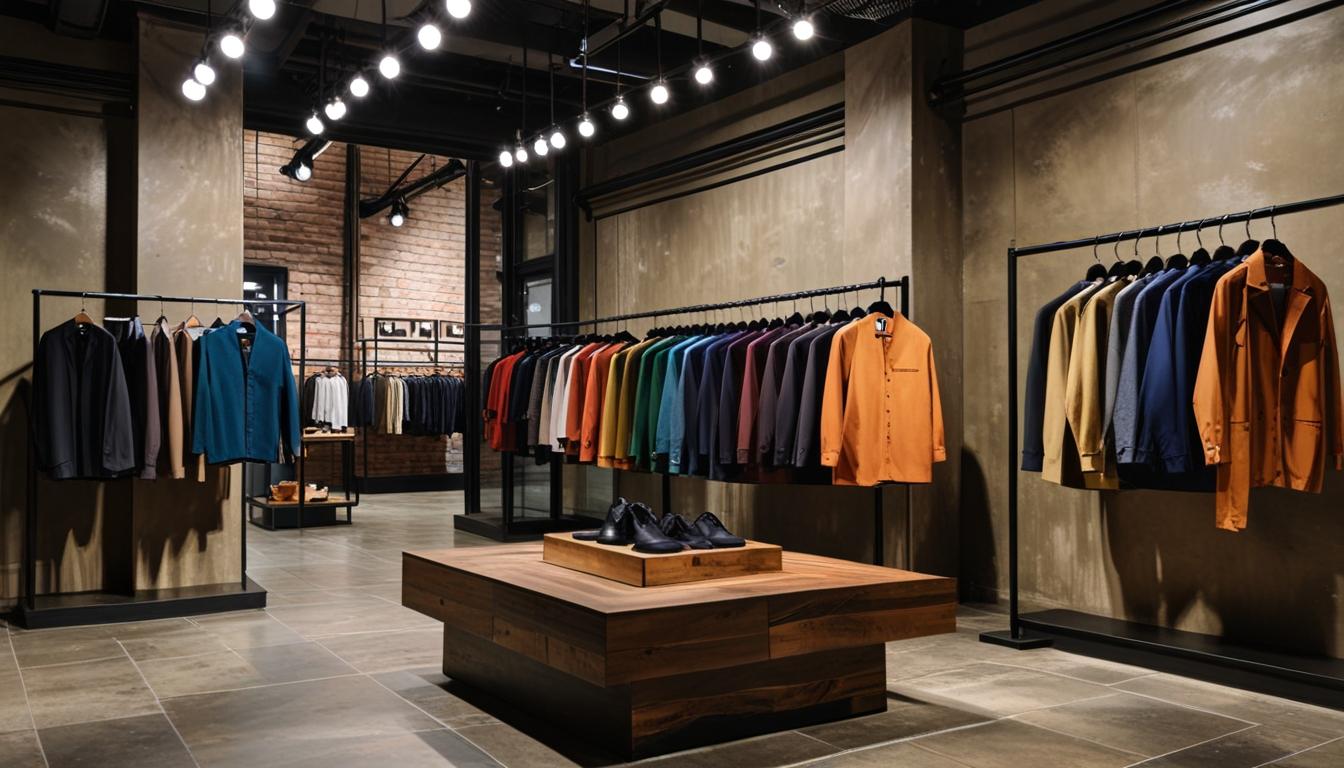The House of Dior has a rich history shaped by iconic designers. Christian Dior launched the brand in 1946, introducing the groundbreaking "New Look" that celebrated femininity. Following him, Yves Saint Laurent brought relaxed styles, while Marc Bohan focused on sophisticated silhouettes. John Galliano energized the fashion scene with his theatrical designs, and since 2016, Maria Grazia Chiuri has added feminist perspectives to the brand. Each designer's vision has influenced not just Dior, but the entire fashion industry. You're now just scratching the surface of Dior's creative journey, and there's so much more worth exploring about this iconic house!
Origins of the House of Dior
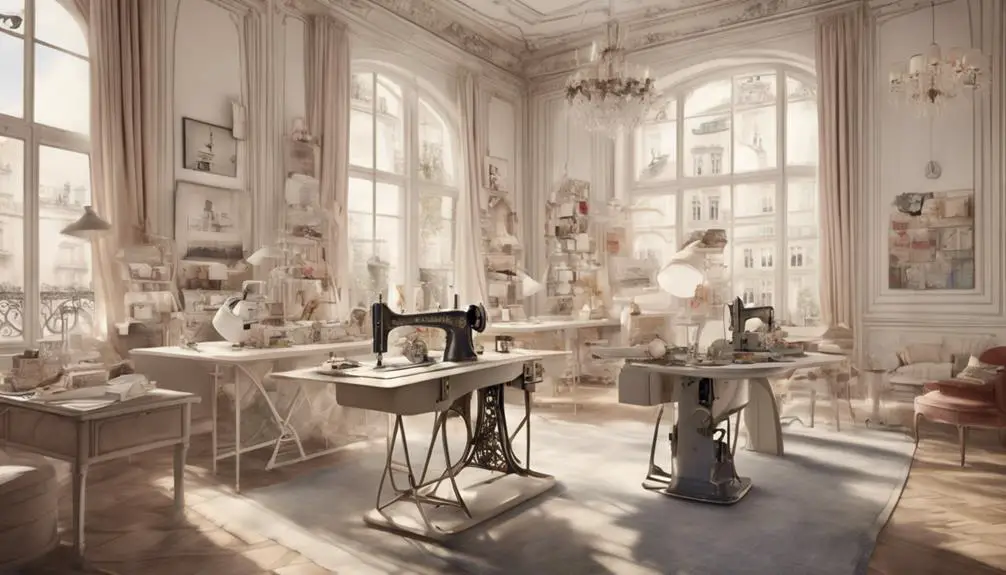
The House of Dior burst onto the fashion scene in December 1946, founded by the visionary Christian Dior in Paris with just 6 million francs and a small team of 85 employees.
From the very start, Dior aimed to redefine women's fashion. His first collection, named Corolle, introduced the concept of "flower women," celebrating femininity in a vibrant way. It laid the groundwork for what would become Dior's signature aesthetic.
On February 12, 1947, Dior revealed the iconic "New Look," a collection that dramatically transformed the fashion industry.
With its nipped-in waists and voluminous skirts, the New Look marked a significant departure from the austere styles of the post-war era. This fresh approach to haute couture captivated women around the world and quickly established Dior as a leading designer.
Notable Creative Directors
Five iconic creative directors have played pivotal roles in shaping the House of Dior's legacy since its inception.
Christian Dior founded the house in 1946 and introduced the revolutionary "New Look" in 1947, which transformed women's fashion after World War II. His vision celebrated femininity with its cinched waists and full skirts, establishing Dior as a leader in haute couture.
After Dior's passing in 1957, Yves Saint Laurent became the youngest creative director at just 21. He launched the innovative Trapeze Line, which relaxed the restrictive silhouettes that Dior had popularized, allowing women more freedom in their fashion choices.
Following Saint Laurent, Marc Bohan took the reins in 1960, leading Dior for nearly three decades. His Slim Look was embraced by high-profile clients, like Princess Grace of Monaco, blending elegance with modernity.
In 1996, John Galliano took over and brought a bold, theatrical flair to the brand. His daring designs and dramatic runway shows revitalized Dior's image, making it a staple in luxury fashion until his dismissal in 2011.
Evolution of Design Aesthetics
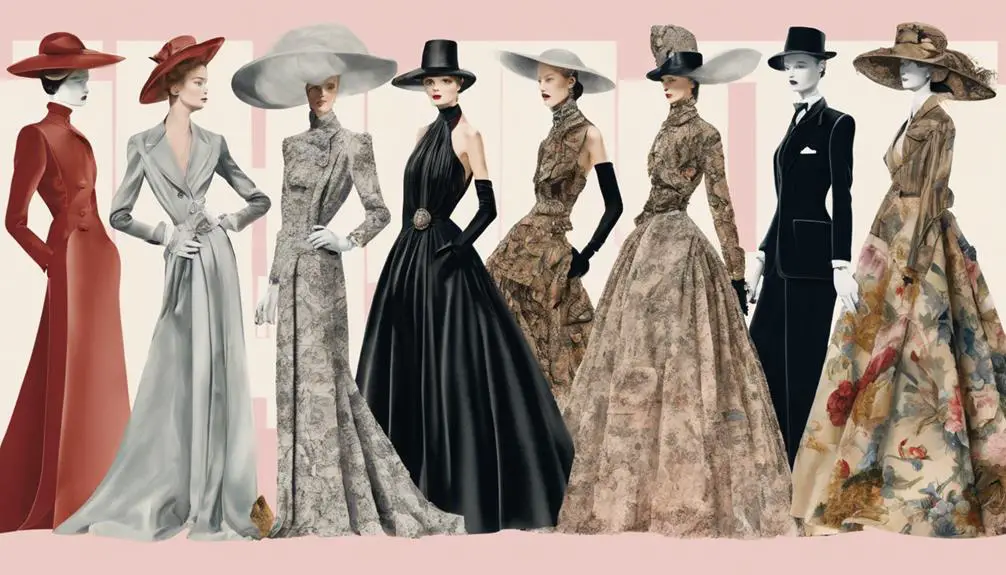
Since its founding, the House of Dior has continuously evolved its design aesthetics to reflect changing societal values and fashion trends. Each creative director brought their unique perspective, shaping the brand's identity over the decades.
- Christian Dior introduced the revolutionary New Look in 1947, celebrating femininity with cinched waists and full skirts, a stark contrast to the post-war austerity.
- Yves Saint Laurent took the reins from 1957 to 1960, introducing the Trapeze Line. This collection shifted the focus from strict silhouettes to a more relaxed style, embracing youthful influences from contemporary culture.
- Following him, Marc Bohan led from 1960 to 1989, crafting the Slim Look, which emphasized streamlined designs appealing to a sophisticated clientele, including icons like Princess Grace of Monaco.
Later, John Galliano's era from 1996 to 2011 marked a shift towards theatrical designs, featuring bold embellishments and innovative cuts that reinvigorated Dior's runway presence.
In 2016, Maria Grazia Chiuri became the first female creative director, infusing a modern feminist perspective into the brand. Her collections celebrate empowerment and inclusivity, exemplified by statements like the iconic "We Should All Be Feminists" T-shirt.
Through these significant transformations, Dior hasn't only remained relevant but has also set trends in the world of couture houses, continuously reflecting the spirit of its times.
Impact on Fashion Industry
Dior's influence on the fashion industry is undeniably profound, shaping trends and redefining standards for luxury. When Christian Dior introduced the "New Look" in 1947, he revolutionized women's fashion. His designs emphasized a cinched waist and full skirts, marking a dramatic shift from post-war austerity. This innovative style influenced countless designers and laid the foundation for modern haute couture collections.
The impact of Dior extends beyond just design. In the 1950s, his innovative licensing strategy helped the house dominate the fashion export market, accounting for 75% of Paris' exports by 1953. This success not only shaped the fashion landscape but also greatly boosted France's economy.
Yves Saint Laurent, appointed as creative director at just 21, took Dior's legacy further by blending youth culture with couture through the Beat Look. This approach shaped luxury fashion in the 1960s, creating a new era of style.
Later, John Galliano's tenure brought a theatrical flair, revitalizing Dior's image and runway presentations, making it one of the most electrifying periods in fashion history.
Most recently, Maria Grazia Chiuri's appointment as the first female creative director in 2016 marked a cultural shift towards female empowerment in fashion. Her collections emphasize feminist themes, redefining modern femininity while honoring the house's legacy.
Through these revolutionary designs and visionary leaders, Dior has consistently influenced the fashion industry, making it a beacon of creativity and innovation.
Contemporary Vision and Future
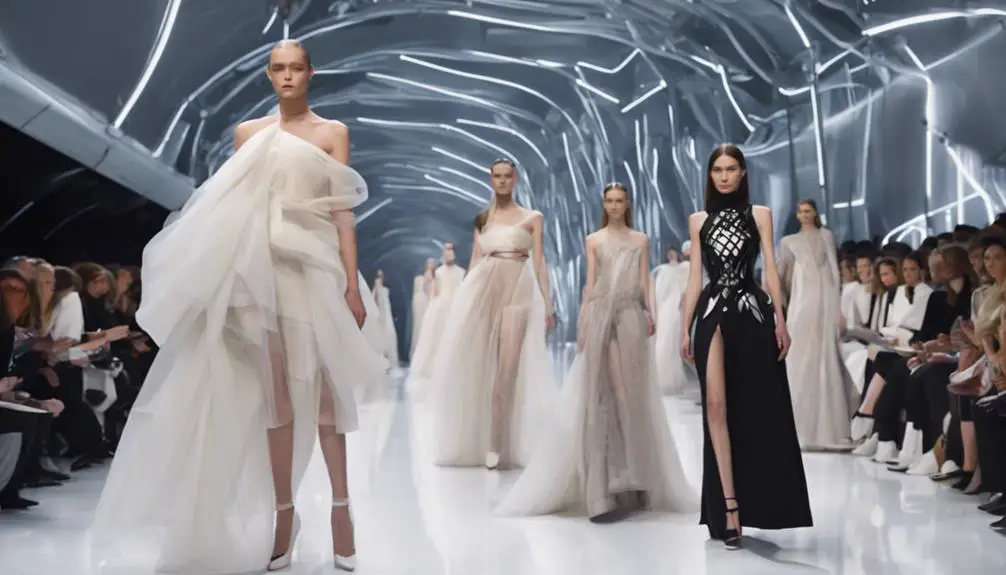
At the forefront of contemporary fashion, the House of Dior embraces a bold vision for the future, blending tradition with modernity.
Under the leadership of Maria Grazia Chiuri, the first female creative director since 2016, Dior has flourished by championing themes of empowerment and inclusivity. Her collections resonate deeply, often infused with social messages that reflect today's dynamic culture.
Kim Jones, appointed as the creative director for Dior Homme in 2018, adds another layer to Dior's contemporary vision. His youthful, pop-centric aesthetic, highlighted by collaborations with artists like KAWS, captures the pulse of modern fashion trends.
Together, Chiuri and Jones are redefining Dior's identity while maintaining the brand's rich history in haute couture.
Here are some key aspects of Dior's contemporary vision:
- Empowerment through Fashion: Chiuri's designs encourage self-expression and empowerment, especially for women.
- Innovative Collaborations: Jones' partnerships with contemporary artists bridge the gap between traditional couture and streetwear.
- Commitment to Inclusivity: Dior prioritizes diverse representation, guaranteeing that its collections resonate with a broad audience.
Dior's commitment to merging haute couture with contemporary influences guarantees it stays relevant in a rapidly changing fashion landscape.
As you explore Dior's future, you'll see that the brand isn't just about clothing; it's about creating a movement that celebrates empowerment, creativity, and inclusivity in every collection.
